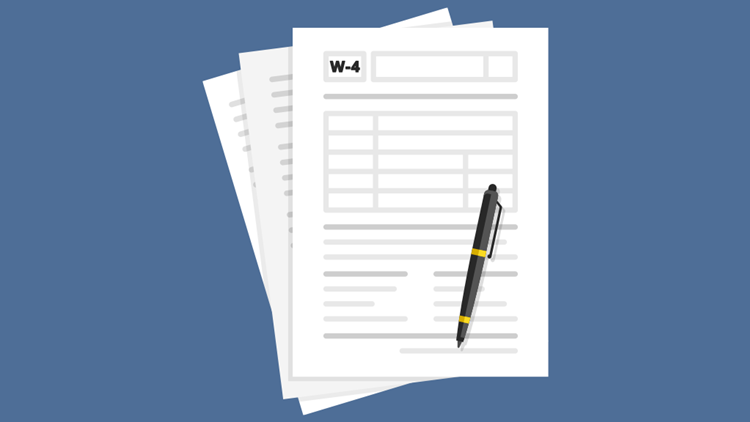Time to Check Withholding

The last part of the year is traditionally a good time for taxpayers to check their withholding levels for the upcoming new year. That's why the Internal Revenue Service recently issued a friendly reminder.
With 2021 going by like a runaway train, it’s easy to just let withholdings slide, thinking what worked this year will work next year.
That, however, may not necessarily be the best strategy. Life is full of unexpected turns; marriage, divorce, a new child or the purchase of a home can all be really good reasons to refigure withholding.
Checking withholding is easy; the IRS has a Tax Withholding Estimator that helps taxpayers decide if they have too much or too little withheld, and how to make a tweak to put more money in their pocket instead of the pockets of the IRS.
The Estimator can also be used to help taxpayers see if they should withhold more or should make an estimated tax payment to avoid a big bill for tax due when they file next year.
The IRS reminds that the Withholding Estimator can also be very helpful to retirees, self-employed taxpayers and others, giving them a step-by-step tool that can tailor the amount of income tax being withheld from wages and pension payments to the actual tax owed.
Points to ponder for 2021
The Internal Revenue Service says there are things to consider when adjusting withholding for 2021:
- Coronavirus tax relief – Tax help for taxpayers, businesses, tax-exempt organizations and others – including health plans – that have been affected by COVID-19.
- Disasters such as wildfires and hurricanes – Special tax law provisions may help taxpayers and businesses recover financially from the impact of a disaster, especially when the federal government declares their location to be a major disaster area.
- Job loss – IRS Publication 4128, Tax Impact of Job Loss, explains how this unfortunate circumstance can create new tax issues.
- Workers moving into the gig economy due to the pandemic – IRS advises people earning income in the gig economy to consider estimated tax payments to avoid a balance or penalties when they file.
- Life changes such as marriage or childbirth – Getting married or having a child are just a couple of the life events that can affect your refund or how much you owe.
Income taxes are “pay as you go”
Whether they’re withheld from a paycheck, paid as quarterly estimated tax payments, or a little of both, taxes are generally paid year-round. The IRS, however, figures that about 70% of all taxpayers withhold too much from their income for taxes. This results in a refund at tax time; in 2021, the average refund was more than $2,700.
Taxpayers who need to pay their taxes have some options on just how to send the payment to the Internal Revenue Service. One of the easiest options is to use the IRS2Go app, which allows users to schedule payments for future dates. The feature is handy for payment plan installments, estimated tax payments, or to pay taxes during filing season.
Other options for payment include connecting by phone or going online.
The taxpayer’s online account is a powerful tool that can help keep the taxpayer informed on a number of details surrounding their tax picture:
- The amount of taxes they owe;
- Payment plan details and options;
- The last 5 years of their tax payment history;
- Scheduled or pending tax payments; and
- Key information from their most recent tax return.
Taxpayers can sign into their online account at IRS.gov/account.
More information about taxes, estimated taxes and withholding can be found at Tax Withholding on the IRS website, IRS.gov.
Source: IR-2021-199



